
A team of Portland State University urban planning graduate students has completed a report on the future of Sandy Boulevard. Their plan seeks to rescue the diagonal arterial from its notorious reputation and turn it into a destination.
Their recommendation: swap two existing on-street parking lanes for bike lanes and get rid of two general travel lanes to make room for two bike-only travel lanes that are physically protected from other road users.
Despite its 60-foot wide profile, Sandy Blvd currently has no dedicated space for bicycling. It has long been eyed for a bikeway due to its diagonal alignment that could provide convenient, efficient access to many destinations and other facilities in the bike network in a fraction of the time it takes riders to navigate around it.
With a full repaving project scheduled by the Portland Bureau of Transportation in 2026, nonprofit bike advocacy organization BikeLoud PDX worked with Strategic Minds Consulting Group, made up of five PSU Masters of Urban Planning (MURP) graduates who took on the project as part of their MURP workshop. The group has worked since January to research the stretch of the road between 14th and 28th. They held open houses, hosted interviews and surveys. They also came to events like Bike Happy Hour to present the project and collect feedback.
Strategic Minds released their existing conditions report back in May. Their final report calls for two 10-foot wide bike lanes — wide enough for a seven-foot lane and a three-foot buffer zone. Here’s more from the report:
“This alternative allows existing parking lanes to be maintained on both sides of the street, providing a further barrier of protection between the bike lane and moving vehicle traffic. Cyclists would be unprotected by parking at intersections, driveways, and areas where the roadway narrows to the extent that parking cannot be accommodated, mostly due to left turn lanes, bus stops, and pedestrian crossing curb extensions. In these areas, the bike lane would be separated from vehicle traffic with a 3’ physical barrier. Currently, pedestrians crossing Sandy must cross four lanes of moving vehicle traffic. This alternative would shorten the crossing distance to two lanes of moving traffic, increasing safety and comfort for pedestrians.”
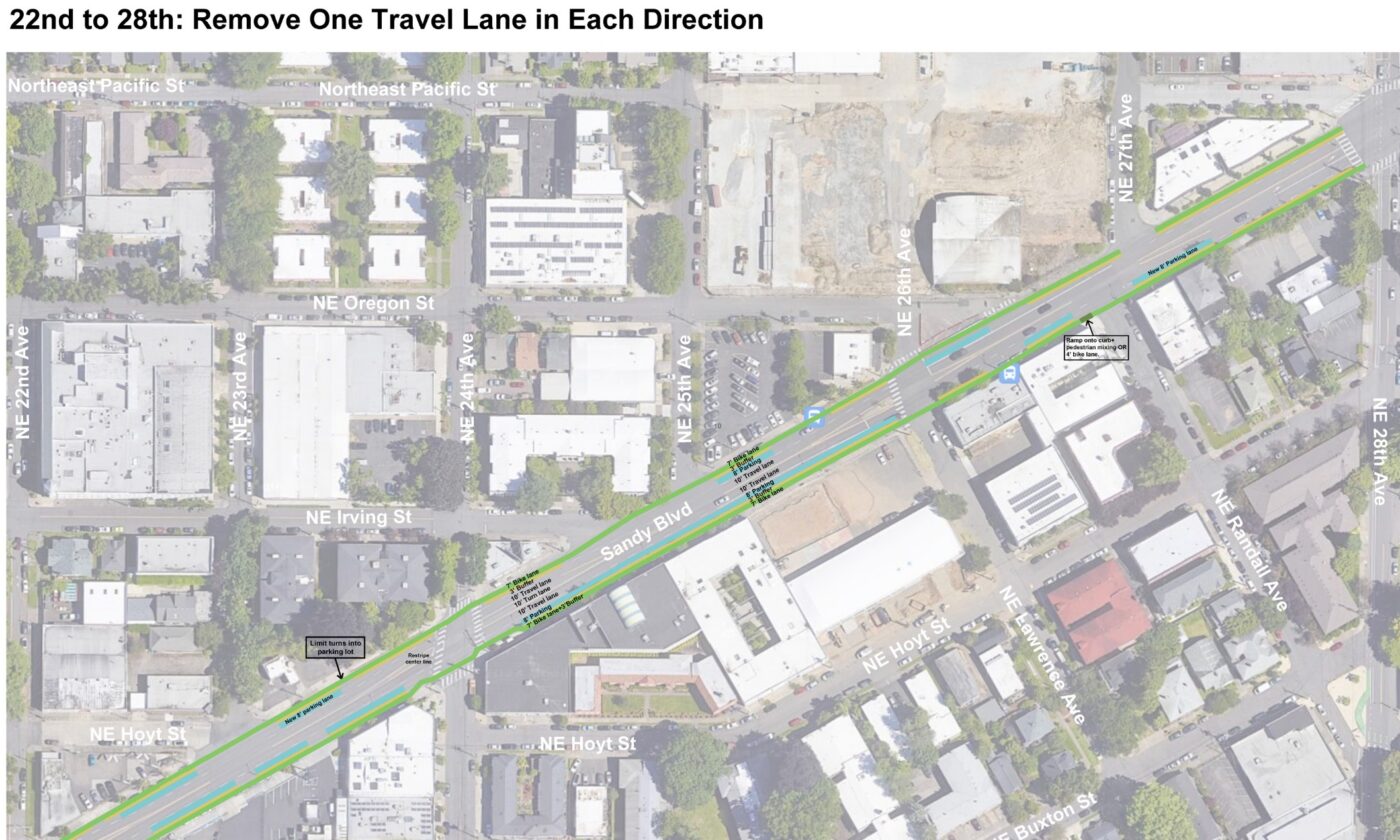

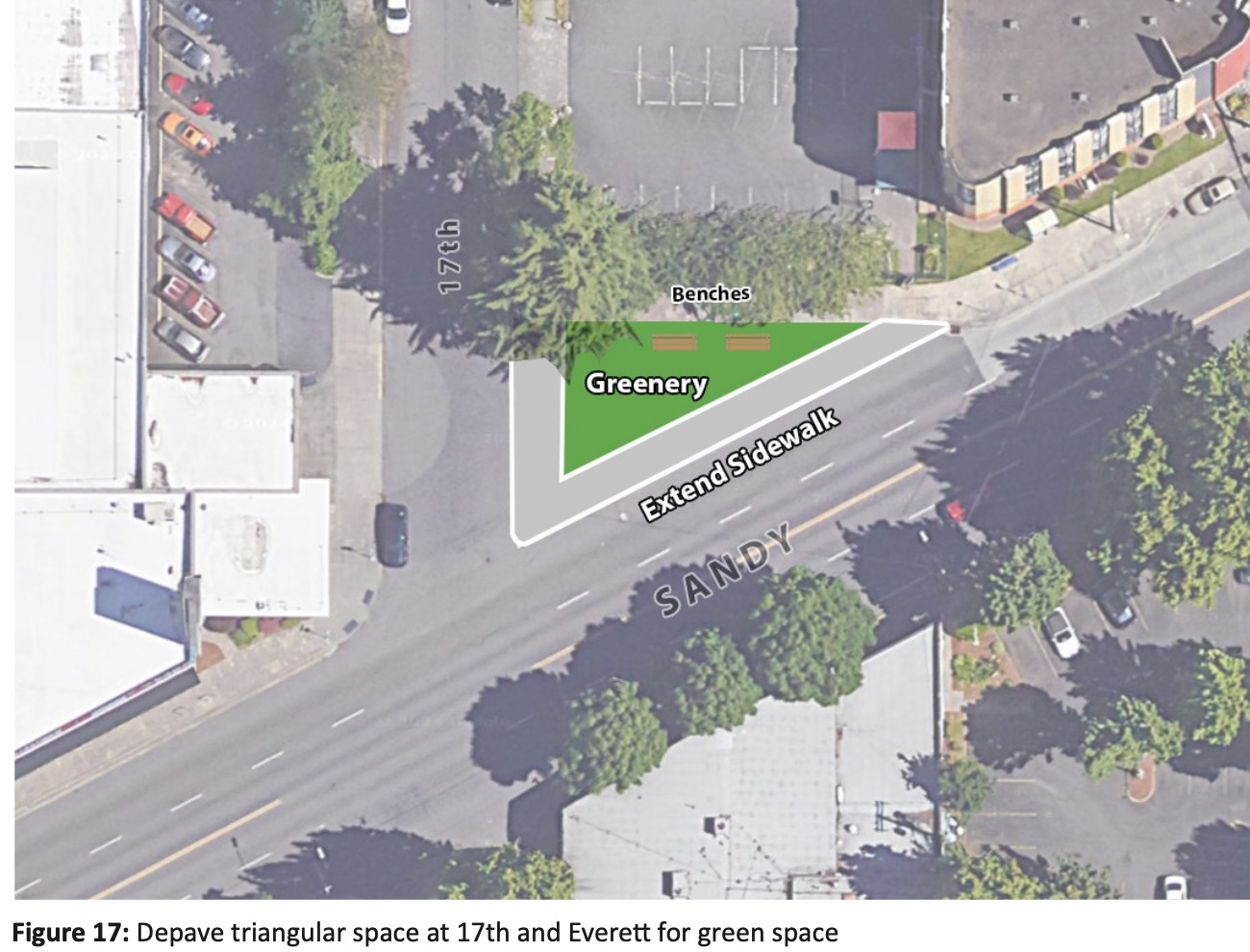
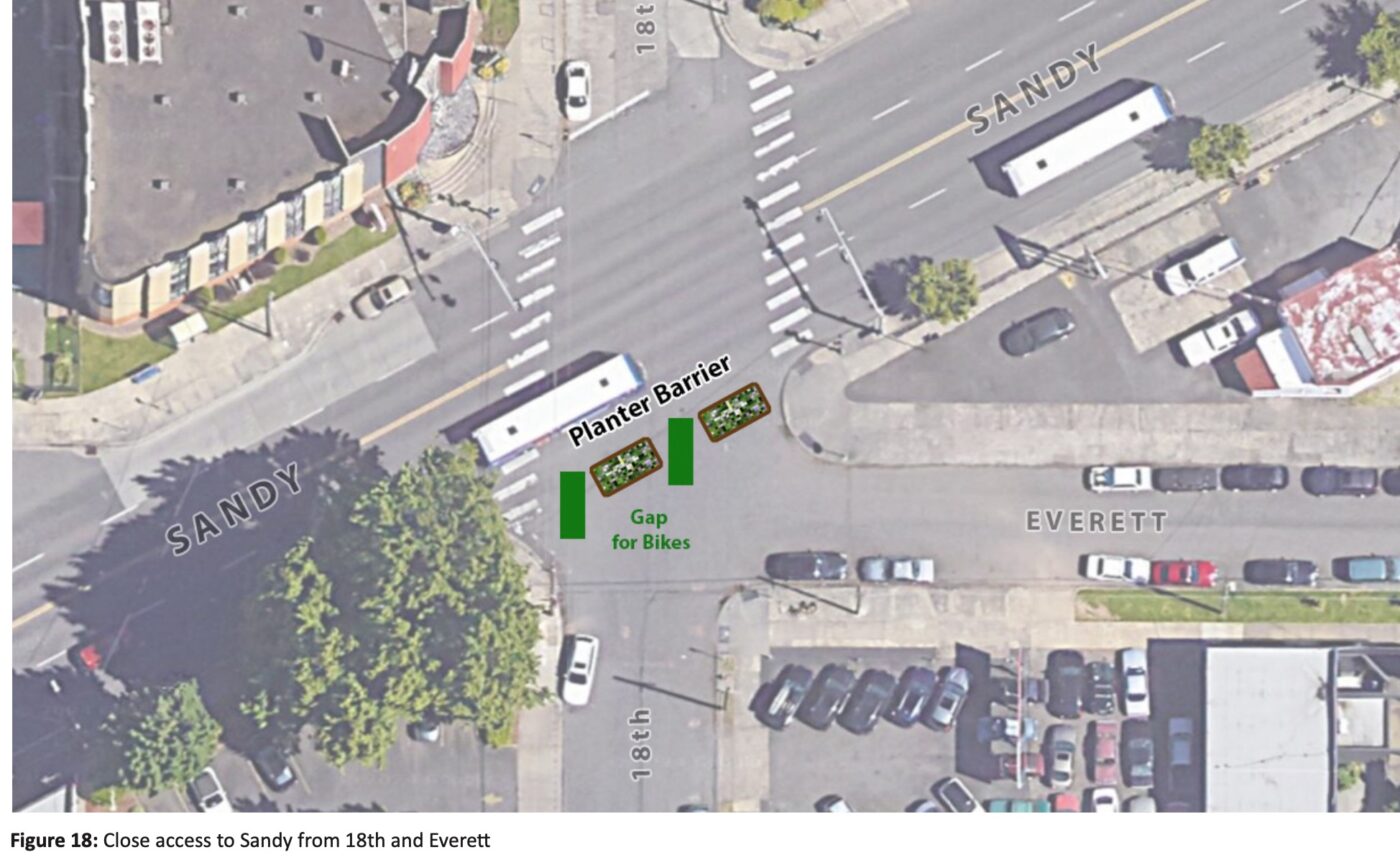
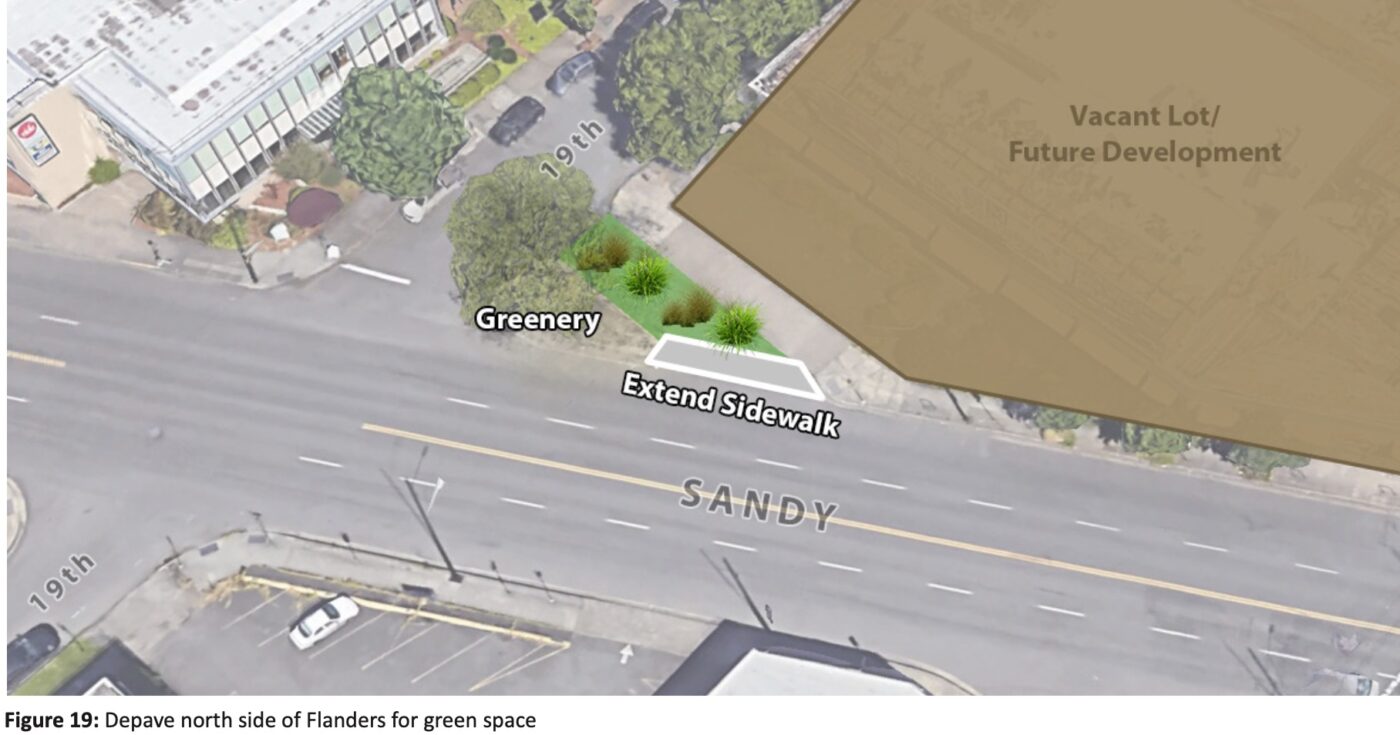


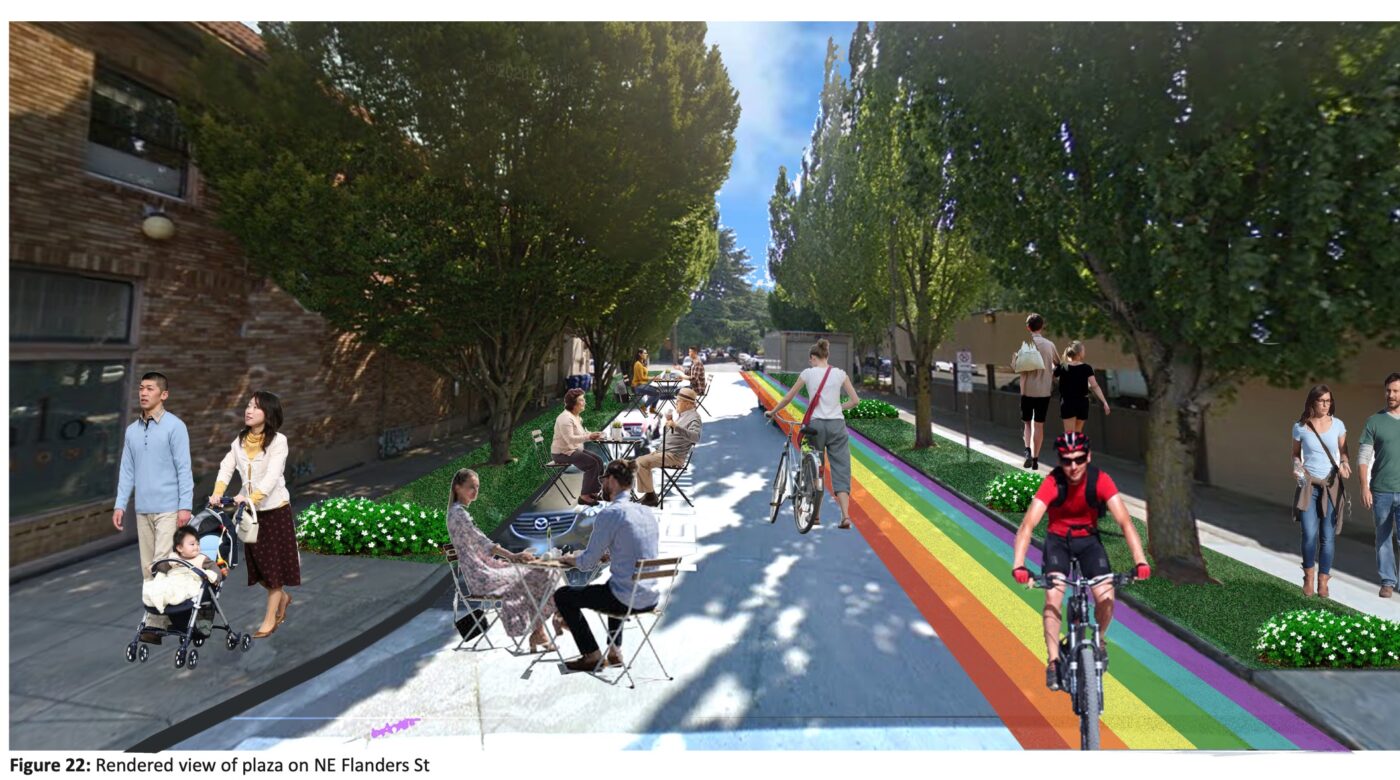
The project team shared several justifications for their recommendation. Fewer lanes for car users will effectively narrow the driving space and lead to slower speeds overall, thus making it safer for everyone. Removal of two driving lanes will also make crossing Sandy much easier and safer. Their recommendation also aligns with Portland’s adopted Vision Zero goal, which specifically calls for a “safe systems” approach that includes road diets.
Strategic Minds also found broad public support for this change. “Engaged community members also put a strong emphasis on wanting Sandy Boulevard to be a pleasant place to spend time,” the report reads. “Rather than just a freeway bypass.” And from a business and economic development perspective, when Sandy Blvd is a quieter, safer place with capacity for more people (not just more cars), folks will be more likely to spend time on the street. And in economic terms, that means businesses could see more customers and larger receipts.
The project team says PBOT should consider a temporary demonstration project to test out this new configuration before the street is repaved. PBOT should be open to the idea since the agency once sought a grant to do a similar report of their own back in 2020.
In their detailed recommendation, the project team also shared how they’d approach a bus priority lane and shared ideas for how to transform several intersections along Sandy Blvd with traffic calming methods to make it safer and more human-scale.
While the project team reported latent bicycling demand and general popularity for changes like this, they also found some residents and business owners who are concerned about how it would impact parking. “The perceived shortage of parking, as well as the potential removal of existing spaces were frequently mentioned,” reads the report. “Community members expressed concerns that new apartment complexes without parking facilities would worsen the neighborhood’s parking situation.”
— Read the Future Sandy Final Report here.



